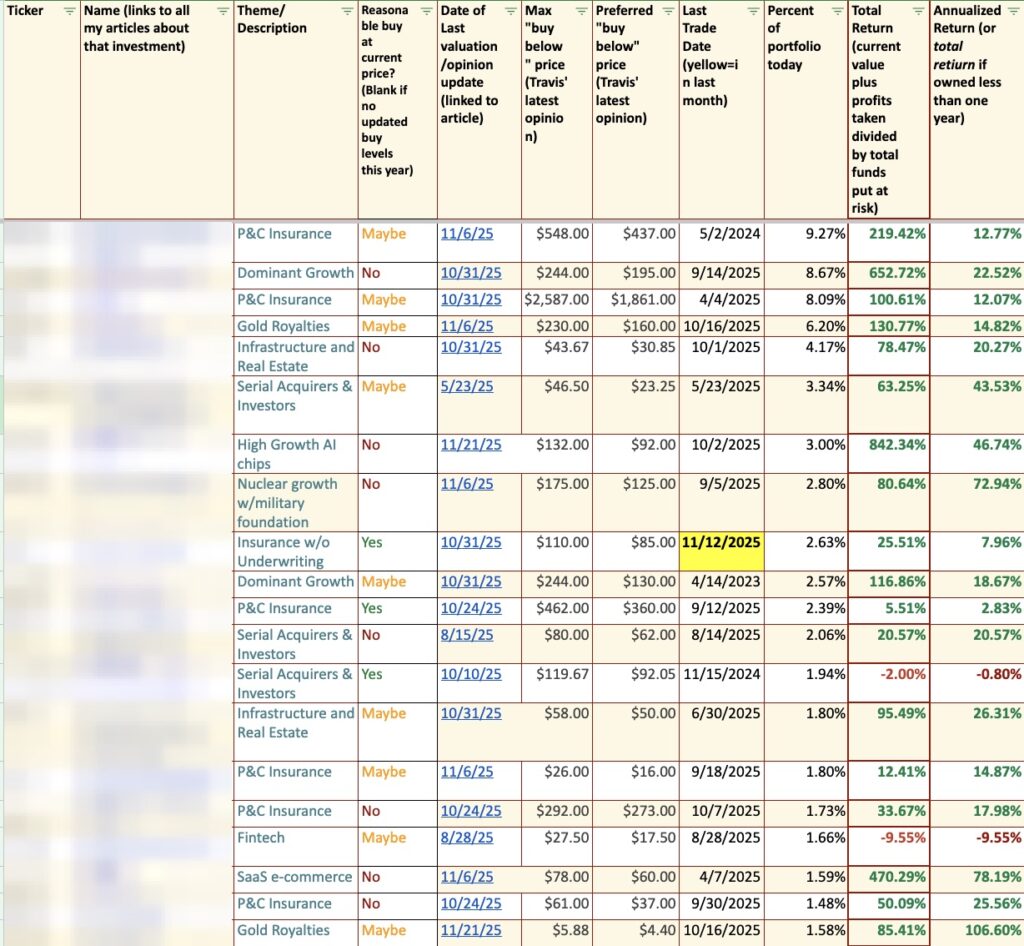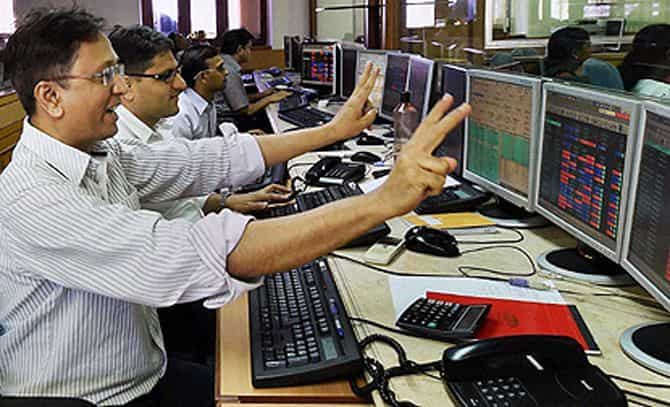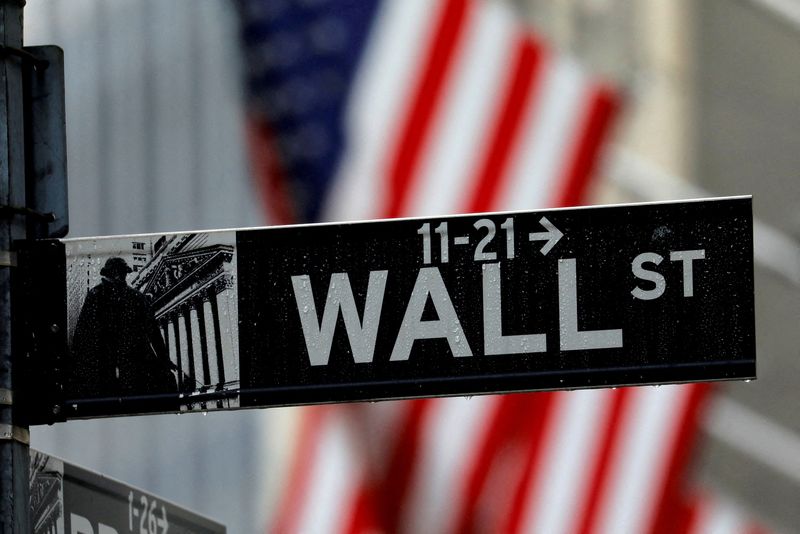Good Friday evening to all of you here on r/stocks! I hope everyone on this sub made out pretty nicely in the market this past week, and are ready for the new trading week ahead. 🙂
Here is everything you need to know to get you ready for the trading week beginning December 26th, 2022.
The S&P 500 and Nasdaq Composite rose Friday, but still posted a weekly loss as recession fears continue to batter investor sentiment.
The S&P 500 rose 0.6% to 3,844.82, while the and Nasdaq Composite added 0.2% to close at 10,497.86. The Dow Jones Industrial Average closed 176.44 points higher, or 0.5%, to 33,203.93.
The major indexes oscillated earlier in the session after the core personal consumption expenditures price index, the Federal Reserve’s preferred gauge of inflation, came in slightly hotter than economists expected on a year-over-year basis, indicating that inflation is sticking despite the Fed’s efforts to fight it.
“The economic numbers announced today highlight the difficulty for investors today, where weak numbers bring recession fears and strong numbers bring Fed fear,” said Louis Navellier, founder and chief investment officer of growth investing firm Navellier & Associates.
“You just can’t win right now on macro numbers,” he added. “That is why it’s now much more of a stock-picking market, but with all the index and ETF traders even stocks that are executing their business plan well can get pushed around meaningfully by associated losers.”
The S&P 500 ended the week down about 0.2% for the week, posting its third straight weekly decline. The Nasdaq Composite, meanwhile, lost 2% for the week, also for the third down week in a row. The Dow was the outperformer, posting a 0.9% gain.
Recession fears have resurged recently dashing some investors’ hope for a year-end rally and leading to big losses in December. Investors worry that overtightening from central banks worldwide could force the economy into a downturn.
For December, the S&P 500 has lost 5.8%, while the Dow and Nasdaq have lost more than 4% and 8.5%, respectively. Those are the biggest monthly declines for the major averages since September. Stocks are also on pace for their worst annual performance since 2008.
This past week saw the following moves in the S&P:
S&P Sectors for this past week:
Major Indices for this past week:
Major Futures Markets as of Friday’s close:
Economic Calendar for the Week Ahead:
Percentage Changes for the Major Indices, WTD, MTD, QTD, YTD as of Friday’s close:
S&P Sectors for the Past Week:
Major Indices Pullback/Correction Levels as of Friday’s close:
Major Indices Rally Levels as of Friday’s close:
Most Anticipated Earnings Releases for this week:
(CLICK HERE FOR THE CHART!)
(T.B.A. THIS WEEKEND.)
Here are the upcoming IPO’s for this week:
Friday’s Stock Analyst Upgrades & Downgrades:
What You Need to Know About the Bank of Japan’s (Unexpected) Monetary Policy Change
The Bank of Japan (BOJ) made a surprise decision on Tuesday to widen the allowed trading band for 10-year Japanese government bonds (JGBs) from ~25 to ~50 basis points. This move signals a shift in the BOJ’s approach to monetary policy and inflation and is likely to be sustained by the incoming governor of the BOJ.
For context, Japan has implemented a dovish monetary policy stance for years, with the BOJ’s rates remaining at 0% and large-scale quantitative easing being standard practice. The central bank has targeted a range around zero for the benchmark government bond yield since 2016 and has used this as a tool to keep overall market interest rates low. The policy change could alter the flow of capital from Japan, a major exporter of capital.
The decision to widen the trading band caused the yen to spike and bond yields to rise. This caught investors off guard, who had expected the BOJ to wait to make changes to its yield curve control until Governor Haruhiko Kuroda steps down in April. The 10-year Japanese government bond yield has spiked to 0.47%, close to the BOJ’s newly set implicit cap.
The Largest Buyers of U.S. Treasuries, But for How Long?
Japanese investors have historically sought investment opportunities outside of Japan, and as of October 2022, they were the largest holders of US Treasuries. The BOJ’s decision can significantly alter this flow of capital, causing Japanese investors to reconsider purchasing US Treasuries. The market is currently pricing in higher Japanese yields and a stronger yen. The rise in Japanese government bond (JGB) yield provides an increased incentive for Japanese investors to keep cash at home amid the global economic slowdown. This has the potential to negatively affect foreign risk assets, as well as strengthen the Yen versus the US Dollar.
A Preview of Things to Come?
The Bank of Japan’s (BOJ) low-interest rate policy and its consistent purchase of bonds to maintain its yield cap have been criticized for distorting the yield curve, reducing market liquidity, and contributing to the yen’s depreciation, which has increased the cost of importing raw materials. The main question is whether this is a one-time adjustment or if we are getting a preview of what Japan’s new monetary policy approach will be moving forward.
This unexpected move by the Bank of Japan has the potential to be a headwind to the US Dollar as the Japanese Yen strengthens. We’ll continue to monitor the implications of the hawkish move by the Bank of Japan and be sure to keep you updated along the way.
Russell 1,000 Stocks Down the Most from All-Time Highs
As we wrap up an awful year for the stock market, below we highlight a list of the current Russell 1,000 stocks that are the farthest below their all-time highs. For the index as a whole, the average stock is down 15.85% YTD on a total return basis, while the average stock’s price is about 38% below its all-time high.
About 30% of stocks in the Russell 1,000 are currently at least 50% below their all-time highs, while about 10% of index members are at least 75% below all-time highs. Below we list the 38 stocks that are all down at least 85% from their all-time highs and it includes Palantir’s (PLTR) 85.96% drop to Plug Power’s (PLUG) near evaporation of 99.2%. Most of these names have come down from all-time highs that were made at some point in 2021, although some like PLUG, AIG, and Citi (C) made highs a long time ago.
This list is a who’s who of stocks that got caught up in the post-COVID retail investor buying spree. A name like Carvana (CVNA) hit its all-time high of $376.69 relatively recently in August of last year. It’s at $4.13/share as of this morning. Upstart (UPST) traded above $400/share last October, and it’s at $13 and change now. Roku (ROKU) got up to $490.40 last summer and is at $42 now or more than a full decimal point to the left!
The Best and Worst Performing Stocks of 2022 (through 12/22)
Below are lists of the best and worst performing Russell 1,000 stocks year-to-date on a total return basis. We’ll start with the worst first. Five stocks in the index are down more than 90% this year: Carvana (CVNA), Opendoor (OPEN), Novavax (NVAX), Upstart (UPST), and Affirm (AFRM). Another eleven are down more than 80%, which includes names like Coinbase (COIN), Twilio (TWLO), Wayfair (W), Lucid (LCID), and Roku (ROKU).
Seventy-two percent of stocks in the Russell 1,000 are down YTD, but below are the names that have bucked the trend and gained the most. Just three stocks are up more than 100% YTD: Occidental Petroleum (OXY), Signify Health (SGFY), and Texas Pacific (TPL). Of the 38 names shown, 23 are from the Energy sector, with big names like Exxon Mobil (XOM), Chevron (CVX), and ConocoPhillips (COP) included. Exxon’s 78.8% YTD gain is easily its biggest annual move higher since at least 1980. Merck (MRK) is the biggest of the non-Energy stocks that made the list with a YTD gain of 49.8%.
Day After Christmas NASDAQ & Russell 2000 Up 73.5% Of Time
Santa Claus Rally starts today. The Santa Claus Rally was discovered and named by Yale Hirsch in 1972 and published in our 1973 Stock Trader’s Almanacas the last five trading days of the year and the first two trading days of the New Year. This short, sweet rally is usually good for about 1.3% on the S&P 500, but the real significance of the SCR is as an indicator.
It is our first seasonal indicator of the year ahead. Years when there was no Santa Claus Rally tended to precede bear markets or times when stocks hit significantly lower prices later in the year. As Yale’s famous line states (2023 Almanac page 118): “If Santa Claus Should Fail To Call, Bears May Come to Broad and Wall.”
NASDAQ and Russell 2000 have logged the greatest frequency and magnitude of gains on the day after Christmas. Since 1988, NASDAQ has advanced 73.5% of the time with an average move of +0.42%. R2K has also advanced 73.5% of the time with an average advance of +0.40%. DJIA and S&P 500 have slightly softer records, but bullish, nonetheless.
Two days after Christmas, the market is less bullish with NASDAQ down more often than up. Three days after Christmas R2K small caps take the lead advancing 64.7% of the time with an average gain of +0.46%.
Looking further out, from 1950-1985 last 5 trading days of the year S&P 500 up 34 of 36 years, average gain 1.24%. 1986-2021 up 19 of 36, average gain 0.43%.
Is it Finally Time for The Santa Claus Rally?
“If Santa should fail to call, bears may come to Broad and Wall.” —Yale Hirsh
One of the little-known facts about the Santa Claus Rally (SCR) is that it isn’t the entire month of December but is actually only seven days. Discovered in 1972 by Yale Hirsch, creator of the Stock Trader’s Almanac (carried on now by his son Jeff Hirsch), the real SCR is the final five trading days of the year and first two trading days of the following year, not just December. In other words, the official SCR is set to begin tomorrow, Friday, December 23, 2022.
Historically, it turns out these seven days indeed have been quite jolly, as no seven-day combo is more likely to be higher (up 79.2% of the time), and only two combos have a better average return for the S&P 500 than the 1.33% average return during the official Santa Claus Rally period.
Here’s a chart we shared recently showing that it is the latter half of December when most of the seasonally strong gains occur.
These seven days tend to be in the green, so that is expected. But fun trivia stat, the SCR has been higher the past six years and hasn’t been higher seven years in a row since the ‘70s. The all-time record was an incredible 10-year winning streak in the ‘50s and ‘60s. Here we show all the SCR periods since the tech bubble and how the S&P 500 does after each.
The bottom line is that what really matters to investors is when Santa doesn’t come, as Mr. Hirsch noted in the quote at the start of this blog.
Here we show some recent times investors were given coal during these seven days, and the results after aren’t very good at all. The past five times that the SCR was negative saw January down as well. Then consider when there was no SCR in 2000 and 2008, not the best times for investors, and potentially some major warnings that something wasn’t right. Lastly, the full year was negative in 1994 and 2015 after no Santa. We like to say in the Carson Investment Research team that hope isn’t a strategy, but I’m hoping for some green during the SCR!
Finally, the average gains each year for the S&P 500 is 9.3% and is higher 71.8% of the time. But when there is a SCR, those numbers jump to 10.5% and 73.2%, falling to only 5.0% and 66.7% when there is no Santa. Sure, this is only one indicator, and we suggest following many more indicators to base your investment decisions, but this is clearly something we wouldn’t ignore either.
Don’t Lose Faith Yet
Stocks have sold off hard after the Fed took a more hawkish-than-expected tone last week, which now has stocks looking at one of their worst December returns ever. The good news is that there is still time, and one of the most bullish times of the year is right around the corner.
We will discuss in more detail the Santa Claus rally tomorrow, as it officially starts on Friday. But today, I’ll do a quick blog with a table that is always very popular.
As you can see, this table breaks down how each day of the year does. In my opinion, we are amid some of the strongest days of the year, from late December to early January. With stocks quite oversold and sentiment extremely negative, we expect a rally quite soon.
No Worse Year for Sentiment
The past few weeks had been uneventful when it comes to the AAII’s weekly reading on investor sentiment. As we noted last week, the three-week range that bullish sentiment occupied had reached a record low hovering between 24.3% and 24.7%. In the latest release, sentiment finally moved but not in the most promising direction. Bullish sentiment dropped 4 percentage points down to 20.3% this week to make for the lowest reading since the end of September.
With a decline in neutral sentiment as well, all of the increase went to bears with that reading rising to the highest level and back above 50% for the first time since late October.
As a result of the large inverse moves of the two sentiment readings, the bull-bear spread shows a dramatic tilt towards an even more pessimistic bias with bears outnumbering bulls by 32 percentage points. That is the widest spread since the week of October 20th and lower than most of the past decade’s range.
With yet another week of bears outnumbering bulls, the record streak of negative readings in the bull-bear spread has grown to 38 weeks long; a full month longer than the previous record ending in October 2020. Historically, investor sentiment has acted as a contrarian indicator meaning low readings on optimism have typically been followed by stronger returns for the S&P 500. This time around, sentiment and prices have given each other little reason to turn around.
In an earlier post, we noted how there has not even been a single week this year in which bullish sentiment has been above the historical average of 37.6%. Taking another look at just how depressed sentiment has been, the average bullish sentiment reading in 2022 has been less than 25%. The only years that had come close to such a low reading were 1988 (27.29%) and 1990 (27.08%). Playing into that low average has been the fact that there have been a record 30 weeks this year with bullish sentiment coming in below 25%. Meanwhile, bearish sentiment has averaged 46.17% this year, slightly above the previous record of 45.2% in 2008. With bearish sentiment tipping back above 50% once again this week, there have now been 17 weeks with such an elevated reading, tying the record from 2008 with one week to go.
Malaise Among Individual Investors
The misery of 2022 has continued when it comes to investor sentiment. In the latest weekly AAII poll, bullish sentiment declined from 24.3% down to 20.3%. That’s the lowest reading since the end of September and less than five points above the YTD low of 15.8% from mid-April.
As shown in the chart above, there hasn’t been a single week this year where bullish sentiment has been above its historical average of 37.6%, and the only week where sentiment was even close to its historical average was at the start of the year. With just one week left in the year, barring a historic one-week surge, 2022 will go down as the first year in the history of the AAII survey where there wasn’t a single week that bullish sentiment was above average. Talk about malaise.
Mega-Caps Down $5 Trillion in Market Cap, AMZN Now Down $1+ Trillion
As we approach the end of 2022, below is an updated look at the drawdown in market cap that we’ve seen in the US equity space since major indices peaked on the first trading day of the year. Using the Russell 3,000 as a proxy, the US stock market has seen an $11.7 trillion drawdown from the peak on 1/3/22. The max drawdown was $13.6 trillion at the low on 9/30, so we’ve seen market cap increase by just under $2 trillion since then. In dollar terms, this drawdown has been more extreme than anything investors have ever experienced. That’s pretty deflationary if you ask us!
Of the $11.7 trillion drawdown in US equity market cap, just over $5 trillion of the drop has come from six companies! Below is a look at the six current and former “trillion dollar market cap” club members that have now collectively lost about $5.07 trillion in market cap from their peaks. As shown, Apple (AAPL), Microsoft (MSFT), Amazon (AMZN), Alphabet (GOOGL), Meta (META), and Tesla (TSLA) have all lost at least $750 billion in market cap from their highs. And Amazon (AMZN) is the first to lose more than $1 trillion in market cap! Just a few years ago, no company had a market cap of more than a trillion dollars, and now we have a company that has lost more than a trillion dollars in market cap.
For all six of these companies, their current drawdowns are easily their biggest on record. Apple (AAPL) has lost $880 billion, Alphabet (GOOGL) is down $846 billion, Meta (META) and Tesla (TSLA) are both down more than $760 billion, and Microsoft (MSFT) is down $784 billion even though it was down close to a trillion at its lows in November.
Here are the most notable companies reporting earnings in this upcoming trading week ahead-
(CLICK HERE FOR NEXT WEEK’S MOST NOTABLE EARNINGS RELEASES!)
(T.B.A. THIS WEEKEND.)
(CLICK HERE FOR MONDAY’S PRE-MARKET NOTABLE EARNINGS RELEASES!)
(NONE.)
Below are some of the notable companies coming out with earnings releases this upcoming trading week ahead which includes the date/time of release & consensus estimates courtesy of Earnings Whispers:
Monday 12.26.22 Before Market Open:
(CLICK HERE FOR MONDAY’S PRE-MARKET EARNINGS TIME & ESTIMATES!)
(NONE. U.S. MARKETS CLOSED IN OBSERVANCE OF CHRISTMAS DAY.)
Monday 12.26.22 After Market Close:
(CLICK HERE FOR MONDAY’S AFTER-MARKET EARNINGS TIME & ESTIMATES!)
(NONE. U.S. MARKETS CLOSED IN OBSERVANCE OF CHRISTMAS DAY.)
Tuesday 12.27.22 Before Market Open:
(CLICK HERE FOR TUESDAY’S PRE-MARKET EARNINGS TIME & ESTIMATES!)
(NONE.)
Tuesday 12.27.22 After Market Close:
(CLICK HERE FOR TUESDAY’S AFTER-MARKET EARNINGS TIME & ESTIMATES!)
(NONE.)
Wednesday 12.28.22 Before Market Open:
(CLICK HERE FOR WEDNESDAY’S PRE-MARKET EARNINGS TIME & ESTIMATES!)
(NONE.)
Wednesday 12.28.22 After Market Close:
Thursday 12.29.22 Before Market Open:
(CLICK HERE FOR THURSDAY’S PRE-MARKET EARNINGS TIME & ESTIMATES!)
(NONE.)
Thursday 12.29.22 After Market Close:
(CLICK HERE FOR THURSDAY’S AFTER-MARKET EARNINGS TIME & ESTIMATES!)
(NONE.)
Friday 12.30.22 Before Market Open:
(CLICK HERE FOR FRIDAY’S PRE-MARKET EARNINGS TIME & ESTIMATES!)
(NONE.)
Friday 12.30.22 After Market Close:
(CLICK HERE FOR FRIDAY’S AFTER-MARKET EARNINGS TIME & ESTIMATES!)
(NONE.)
(T.B.A. THIS WEEKEND.)
(T.B.A. THIS WEEKEND.) (T.B.A. THIS WEEKEND.).
DISCUSS!
What are you all watching for in this upcoming trading week?
I hope you all have a wonderful long 3-day holiday weekend and a great trading week ahead r/stocks. 🙂
















